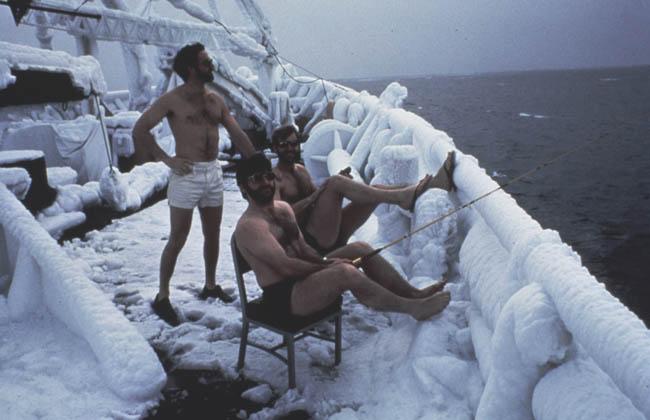Vulnerability
/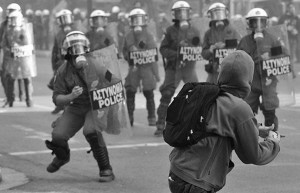 I've been sitting on this blog post for a while. It relates both to Sgt. Rory's workshop last weekend and the Tabby Cat push-hands debate, but it is more deeply about how and why I train.
I've been sitting on this blog post for a while. It relates both to Sgt. Rory's workshop last weekend and the Tabby Cat push-hands debate, but it is more deeply about how and why I train.We fight because we are vulnerable. A little kid can say he wants to kill me but I have no reason at all to fight until I'm vulnerable or someone I care about is vulnerable. It's a minimum requirement.
When animal predators attack they do so in ways that minimize their own vulnerability. When human predators attack they usually do the same thing. A victim may never have the chance to see their attacker, or may only see them as disarmingly charming and friendly in those seconds before the attack.
Here is how a lot of martial artists think: I have great structure. Once I have engaged with a threat I will avoid direct structural force against force contact with the threat until I have acquired a superior position. At that point I will unleash all of my force, weight and structure where the threat is most vulnerable.
Martial games like Mixed Martial Arts, Push-hands, or Boxing all function by limiting both competitor's vulnerabilities. The game then becomes: How can I create a situation where I can exploit a limited subset of my opponent's vulnerabilities before she can exploit mine. The goal is dominance, when that is achieved the game is over. Which is why it is relatively safe.
When we train games we are training to ignore some of our vulnerabilities. This explains why Tabby Cat was accused of ignoring the vulnerability of his head and why he countered that push-hands as a game ignores the extreme vulnerability created by close physical proximity, fixed positioning of the feet, and many other "rules."
To paraphrase the Tai Chi Classics: Because I understand my own vulnerabilities, I understand my opponent's as well. To the degree that my opponent does not understand his own vulnerabilities, I am totally free to act.
So a little re-framing is in order.
The history of warfare begins with attack and then run, followed shortly by attack from a distance with rocks and then run. The next step in evolution was fortification which protected vulnerabilities while simultaneously allowing for counter attack. This works great in the short term but in the long term people with time to plan will overcome your fortifications. The next step was mobile forts, namely tanks and airplanes. Then we got nukes and now we are back to fighting with our hearts and minds against terrorist insurgencies.
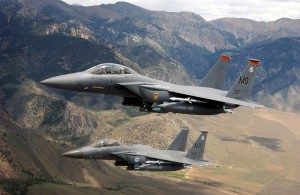 It is very logical to begin martial arts training with simple attack, defend and escape ideas. Then to move on to structure training both as "fortification" and to improve power generation. Next one needs to understand how good structure is broken, so more power training along with targeting and angles--like siege warfare. After that it's important to make our forts mobile, and either tougher like tanks, or freer like airplanes. Whether by conditioning (tanks) or sensitivity (airplanes) we avoid metal (think: structure) against metal confrontation until we have maneuvered into the superior position.
It is very logical to begin martial arts training with simple attack, defend and escape ideas. Then to move on to structure training both as "fortification" and to improve power generation. Next one needs to understand how good structure is broken, so more power training along with targeting and angles--like siege warfare. After that it's important to make our forts mobile, and either tougher like tanks, or freer like airplanes. Whether by conditioning (tanks) or sensitivity (airplanes) we avoid metal (think: structure) against metal confrontation until we have maneuvered into the superior position.All fine and necessary. But in the end it still comes down to working with vulnerabilities. To really put vulnerability at the center of your training, to take it all the way--you need to get weaker. This is not a good strategy for a nation on the edge of survival. But for an already confident powerful nation it makes sense to train for attacks based on putting ourselves in the most vulnerable situations. That's what we are doing of course, planning for systematic terrorist attacks, biological, germ, computer, etc...
The most thorough way to learn about our vulnerabilities is to cultivate weakness.
What did I say? I said that martial artists usually train the best techniques, from the best positions, with the best possible structure. Fine. Go do that for as long as it takes you to see that no matter how good you get at it, your vulnerabilities still don't go away. Then start training without structure, from the worst possible positions, and with spacial awareness instead of technique.
The illusion that we have direct conscious control over our bodies is an enormous source of pain, aggression, and defensiveness. When that civilizing pretense is dropped, the body follows the spacial mind without inhibition.

 A 9 year old student asked me during class the other day if I did any strength training. I did my teacher thing and screwed up one side of my face while bulging out my eye on the other, "No," I replied, "Do you do any strength training?" This kid admitted that he didn't but I could see by the way he looked at the ground that someone had been trying to breed a feeling of deficiency in this kid's head. Now we aren't talking about just any old 9 year old, this kid can walk across the room on his hands and he can do a press handstand from a straddle position on the floor. So I said, "OK, you stand in a low horse stance and I'll put all my weight on your shoulders and you try to lift me up." I leaned down on his shoulders and lifted myself up on to the very tips of my toes so that he had about 150lbs on his shoulders. He then stood up with out even a second thought, lifting me into the air. "That was easy right?" I asked. "You could lift two adults couldn't you?." "Yeah," he said, looking a little brighter. "So you're strong enough already right?" He just looked at me, unsure what to say. "Now you have to figure out how to transfer the force of your legs to your arms. That's what you need to work on." And then we got back to the two-man form we had been working on when he asked the question.
A 9 year old student asked me during class the other day if I did any strength training. I did my teacher thing and screwed up one side of my face while bulging out my eye on the other, "No," I replied, "Do you do any strength training?" This kid admitted that he didn't but I could see by the way he looked at the ground that someone had been trying to breed a feeling of deficiency in this kid's head. Now we aren't talking about just any old 9 year old, this kid can walk across the room on his hands and he can do a press handstand from a straddle position on the floor. So I said, "OK, you stand in a low horse stance and I'll put all my weight on your shoulders and you try to lift me up." I leaned down on his shoulders and lifted myself up on to the very tips of my toes so that he had about 150lbs on his shoulders. He then stood up with out even a second thought, lifting me into the air. "That was easy right?" I asked. "You could lift two adults couldn't you?." "Yeah," he said, looking a little brighter. "So you're strong enough already right?" He just looked at me, unsure what to say. "Now you have to figure out how to transfer the force of your legs to your arms. That's what you need to work on." And then we got back to the two-man form we had been working on when he asked the question.
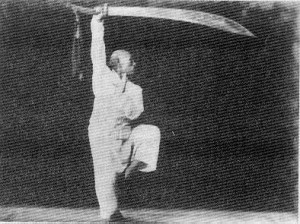 And don't get me started on core strength.... OK, it's too late. Core strength is just a marketing scheme, like Green architectural-design-dog-walking-nanny services. It just sounds good or something. It plays on peoples feelings of insecurity and guilt. There is no core that needs strengthening to begin with, but even if such a core existed, the market is saturated. Every type of movement training from Yoga to tiny-tot-tap-dancing now claims to be good for your "core."
And don't get me started on core strength.... OK, it's too late. Core strength is just a marketing scheme, like Green architectural-design-dog-walking-nanny services. It just sounds good or something. It plays on peoples feelings of insecurity and guilt. There is no core that needs strengthening to begin with, but even if such a core existed, the market is saturated. Every type of movement training from Yoga to tiny-tot-tap-dancing now claims to be good for your "core." The Uncarved Block is one of the primary metaphors for the concept/anti-concept known as wuwei. The Daodejing suggests that we be like an uncarved block of wood. The implication is that once a block of wood is fashioned into something, it loses it’s potential to be something else. Once we make a decision, it cuts off certain options. In other words, it is often good to wait. But the Daodejing isn’t telling us to be indecisive. It doesn’t say, “in difficult situations--waver!” It also doesn’t say be slow, like a tree; or “be inactive,” like a log or a stump. It says be like a partially processed block of wood. Since the Daodejing doesn’t give us any idea how big this block of wood might be, or what it might be for, we can speculate. Our block of wood could be carved into any sort of deity or icon, or perhaps a boat, a cabinet, a ladle, or a coffin. The Daodejing is using this metaphor to point to a process which takes place when we make something. It is not saying, “Don’t make stuff.” Sometimes a decision can position us for more possibilities, sometimes a decision can limit us. Is this better than that? Be comfortable with ambiguity, but have a few uncarved blocks hanging around in case you need them.
The Uncarved Block is one of the primary metaphors for the concept/anti-concept known as wuwei. The Daodejing suggests that we be like an uncarved block of wood. The implication is that once a block of wood is fashioned into something, it loses it’s potential to be something else. Once we make a decision, it cuts off certain options. In other words, it is often good to wait. But the Daodejing isn’t telling us to be indecisive. It doesn’t say, “in difficult situations--waver!” It also doesn’t say be slow, like a tree; or “be inactive,” like a log or a stump. It says be like a partially processed block of wood. Since the Daodejing doesn’t give us any idea how big this block of wood might be, or what it might be for, we can speculate. Our block of wood could be carved into any sort of deity or icon, or perhaps a boat, a cabinet, a ladle, or a coffin. The Daodejing is using this metaphor to point to a process which takes place when we make something. It is not saying, “Don’t make stuff.” Sometimes a decision can position us for more possibilities, sometimes a decision can limit us. Is this better than that? Be comfortable with ambiguity, but have a few uncarved blocks hanging around in case you need them.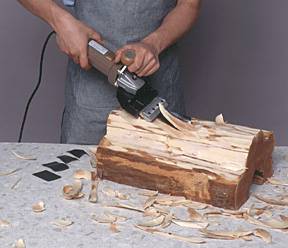
 The moment I start writing a blog post, or you start reading one, the danger that we will lose sight of wuwei increases. Because reading and writing is a form of carving. The moment we put pen to paper we risk crossing over into the land of methods.
The moment I start writing a blog post, or you start reading one, the danger that we will lose sight of wuwei increases. Because reading and writing is a form of carving. The moment we put pen to paper we risk crossing over into the land of methods. As someone whose job it is to translate ideas from one culture to another, the pressure to use more familiar language is always floating around in the background.
As someone whose job it is to translate ideas from one culture to another, the pressure to use more familiar language is always floating around in the background. Basic structure training in Internal Martial Arts gets us to stop using these three big muscles for stabilization by getting us to put our weight directly on our bones. The other 400 or so smaller muscles in our bodies are then used to focus force along our bones through twisting, spiraling and wrapping. In that sense, the early years of internal martial arts training teaches us to use our muscles like ligaments; or put another way, the primary function of the smaller muscles becomes ligament support. (To develop this capacity in ones legs requires many years of training.)
Basic structure training in Internal Martial Arts gets us to stop using these three big muscles for stabilization by getting us to put our weight directly on our bones. The other 400 or so smaller muscles in our bodies are then used to focus force along our bones through twisting, spiraling and wrapping. In that sense, the early years of internal martial arts training teaches us to use our muscles like ligaments; or put another way, the primary function of the smaller muscles becomes ligament support. (To develop this capacity in ones legs requires many years of training.)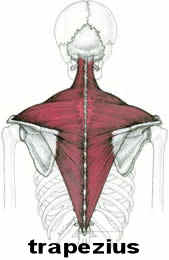 The three big muscles are already so big they don’t need to be strengthened but they do need to be enlivened. All three muscles should be like tiger skin or octopi, able to expand and condense and move in any direction. They then can take over control of the four limbs in such a way that movement becomes effortless--even against a strongly resistant partner. If you accomplish this all of your smaller muscles will be doing the task of transferring force to the three big muscles---preventing an opponent from being able to effect your body through your limbs. Yet whenever your limbs make contact with your opponent, he will be vulnerable to the force of your three big muscles.
The three big muscles are already so big they don’t need to be strengthened but they do need to be enlivened. All three muscles should be like tiger skin or octopi, able to expand and condense and move in any direction. They then can take over control of the four limbs in such a way that movement becomes effortless--even against a strongly resistant partner. If you accomplish this all of your smaller muscles will be doing the task of transferring force to the three big muscles---preventing an opponent from being able to effect your body through your limbs. Yet whenever your limbs make contact with your opponent, he will be vulnerable to the force of your three big muscles.